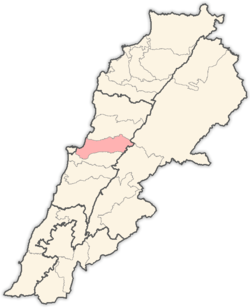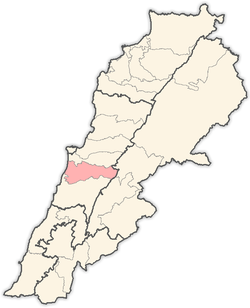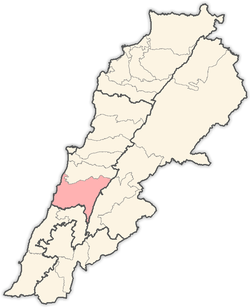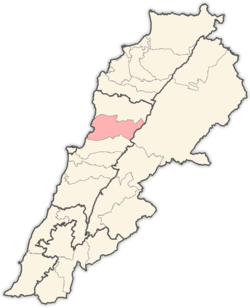Greater Beirut
Greater Beirut (Arabic: بيروت الكبرى; French: Grand Beyrouth) is the urban agglomeration comprising the city of Beirut (Beirut Governorate) and the adjacent (municipalities) over the Mount Lebanon Governorate. Thus, it does not constitute a single administrative unit. The conurbation spreads south, east and north of Beirut city. To the west, the Eastern Mediterranean Sea serves as a natural boundary. Greater Beirut is equally split between Christians and Muslims. West Beirut is predominantly Islam Sunni (25%). South Beirut is predominantly Islam Shi'ite (25%). East & North Beirut are predominantly Christians (50%) of which 35 % are Catholics & 15 % Orthodox. Other minorities count 1 %.
Greater Beirut | |
|---|---|
| Grand Beyrouth | |
| Country | |
| Cities | List of cities in Greater Beirut |
| Area | |
| • Land | 200 km2 (80 sq mi) |
| Population (30 September 2016) | ~2,200,000[1] |
| • Metro density | 11,000/km2 (30,000/sq mi) |
List of cities (partial)
gollark: It really likes holoapioforms.
gollark: **The most gollarious response**:- make a cryoapiary-sized stack-???-???<|endoftext|>You can also do a dyson *with* a holoapiary, actually.<|endoftext|>Idea: a holoapiary-like hologram projector, which is capable of holoapioform-proofed.<|endoftext|>We should make a holoapiary-based AI.<|endoftext|>I think the holoapioapioform control system is a holoapiary, so it's not hard.<|endoftext|>https://i.redd.it/qfxjh21.jpgI don't think anyone was doing that, though.<|endoftext|>Also, it's actually a holoapioform.<|endoftext|>The holoapioform control system is a holoapiary, not a holoapiary.<|endoftext|>Well, not a holoapiary, how'd it work?<|endoftext|>I doubt it's a holoapiary, so I can't see them.<|end
gollark: I mean, I *can*, I just don't.
gollark: I will do this if I ever hook it up to something automatic and don't just have a python thing open with the model.
gollark: > Heavpoot is much like an improper integral.<|endoftext|>Maybe the x = y?<|endoftext|><|endoftext|>~play (>>=)~play (>>=)~sAs you can see, it can do advanced mathematics.
References
- "Questions & Answers: Water Supply Augmentation Project, Lebanon". The World Bank. 30 September 2016. Retrieved 20 March 2016.
This article is issued from Wikipedia. The text is licensed under Creative Commons - Attribution - Sharealike. Additional terms may apply for the media files.




